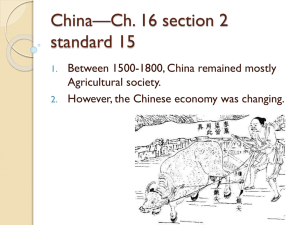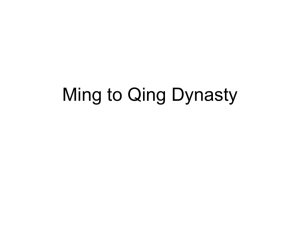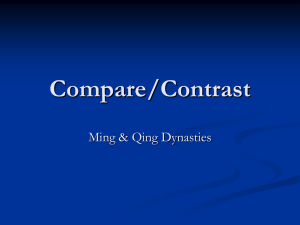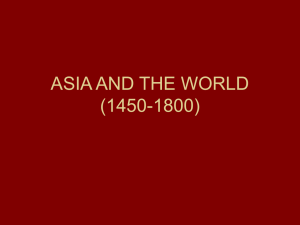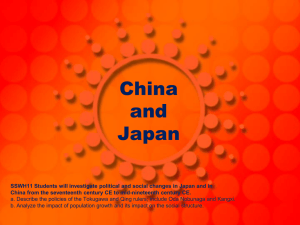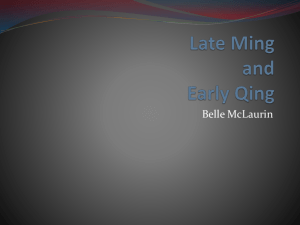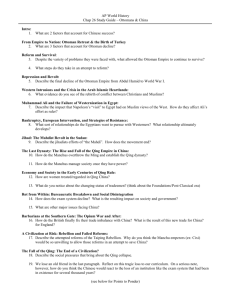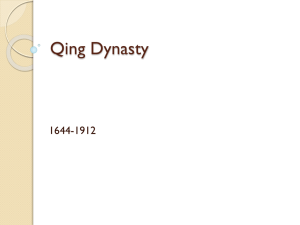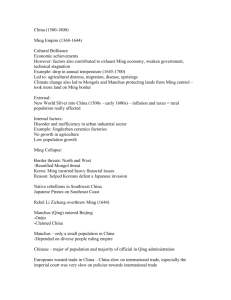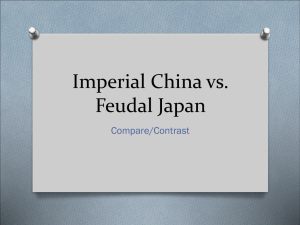Ming and Qing Dynasties
advertisement
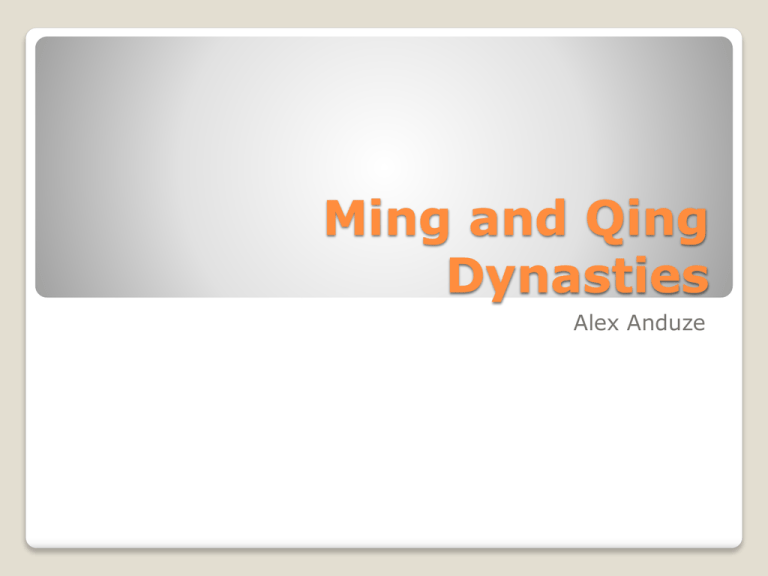
Ming and Qing Dynasties Alex Anduze Began with the overthrow of the Mongols-1368 First years were characterized by effective government and a strong economy ◦ Population and food stocks grew ◦ Confucianism reemerged ◦ International trade continued, despite cautious rulers Ming Dynasty: Beginnings All powerful emporer ruled the empire Capitol: Beijing- Emperor ruled from the Forbidden City Civil service bureaucracy was reestablished Army- 1 million troops Political Characteristics 16th century Ming China had more commercial activity than any other nation in the world Large percentage of people were merchants and traders Port cities grew and were very clean, unlike today ◦ Macao ◦ Guangzhou ◦ Hangzhou ◦ Shanghai Economic Progress Attitude of time was that the Middle Kingdom needed little from anyone else Portuguese and Dutch were the only Europeans allowed to trade inside of China Contact and exchange of culture between Japan and China were prominent Jesuit missionaries, led by Matteo Ricci, tried to convert the Chinese to Catholicism but failed Cultural Contact With Outsiders Series of weak and corrupt emperors Over-extended to the north and west Peasants rebelled against the weak government Eventually, the Manchus from the north overthrew the Ming Dynasty in 1644 Decline of the Ming Manchus gain control over Beijing-1644 Conquer all of China near the end of the 17th century, establishing the Qing Empire Qing were able rulers: China grew to its largest size under their rule and was the largest country in the world Qing Dynasty:Beginnings Qing Dynasty had two great rulers ◦ Kangxi: 1661-1722 ◦ Qianlong: 1736-1795 During the 130 years that these two men ruled, China grew to become a prosperous and powerful empire Qing leaders separated Manchus and Chinese ◦ Intermarriage was prohibited ◦ Highest government officials were all Manchus Political Organization Unlike the Ming who had a commercial economy, the Qing relied on agriculture more than trade The work of a peasant farmer was seen as more honest and worthy of respect than that of a merchant Men had almost absolute control over women ◦ Foot binding started ◦ Widows were encouraged to commit suicide if their husbands died Economic and Social Characteristics Porcelain, calligraphy, painting: major forms of art Confucianism stayed strong Many of the people of China were educated Most famous novels of the time were Book of the Golden Lotus and the Dream of the Red Chamber Cultural Influences Weak rulers after Kangxi and Qianglong Economic rivalries between Britain and China led to the Opium War Eventually the dynastay crumbled due to these factors combined with civil unrest, flooding, and famine Collapse of the Qing
